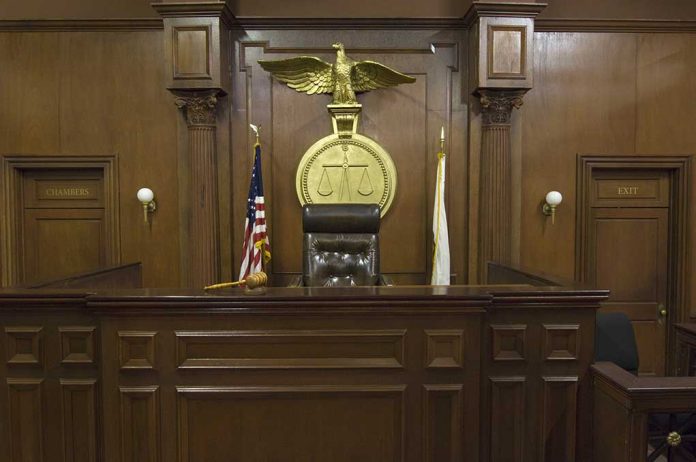
A federal judge’s controversial ruling sparks impeachment proceedings, igniting a fierce debate over judicial authority and executive power.
Key Takeaways
- Judge Paul Engelmayer issued a temporary injunction blocking political appointees from accessing Treasury Department data.
- Rep. Eli Crane (R-Ariz.) is drafting articles of impeachment against Judge Engelmayer, citing judicial overreach.
- The Trump administration argues that the injunction violates the president’s constitutional authority over the executive branch.
- The impeachment process for federal judges is rare and difficult, with only 15 judges impeached in U.S. history.
Judge’s Ruling Sparks Constitutional Controversy
In a move that has sent shockwaves through Washington, Judge Paul Engelmayer, an Obama appointee, has issued a temporary injunction that effectively blocks the Department of Government Efficiency (DOGE) from accessing critical Treasury Department data. This ruling has particularly impacted political appointees, including Treasury Secretary Scott Bessent, restricting their access to Treasury payment records and limiting such access to career civil servants.
The Trump administration has swiftly responded, arguing that this injunction represents a direct violation of the president’s constitutional authority over the executive branch. This clash between judicial decision-making and executive power has reignited debates about the separation of powers and the extent of judicial reach in matters of government operations.
William Upton: GOP CONGRESSMAN MOVES TO IMPEACH JUDGE Blocking DOGE Access to Govt Payment System.
“Representative Eli Crane (R-AZ) is poised to introduce articles of impeachment against U.S. District Court Judge Paul Engelmayer over the latter’s order blocking the Department of… pic.twitter.com/b1oEaEjd9b
— TheReal_AnTheFacts©™🇺🇸☦️🇬🇷 (@Real_AnTheFacts) February 11, 2025
Impeachment Articles in the Works
In response to what he perceives as judicial overreach, Rep. Eli Crane (R-Ariz.) has taken the extraordinary step of drafting articles of impeachment against Judge Engelmayer. Crane contends that the judge’s actions not only impede the government’s functionality but also pose a significant threat to democratic processes.
The lawsuit that prompted Judge Engelmayer’s ruling was initiated by a coalition of 19 state attorneys general, spearheaded by New York Attorney General Letitia James. Their claim centers on an alleged violation of the Constitution’s separation of powers, a principle fundamental to the U.S. system of government.
The Impeachment Process and Historical Context
The process of impeaching a federal judge is both complex and rare. It begins with an investigation by the House Judiciary Committee, followed by a majority vote in the House of Representatives. If successful, the matter then moves to the Senate for a trial, where a two-thirds majority is required for conviction and removal from office.
Historical precedent underscores the difficulty of this process. Throughout U.S. history, only 15 federal judges have faced impeachment, with a mere eight ultimately removed from their positions. This stark statistic highlights the exceptional nature of the current situation and the uphill battle that Rep. Crane and his supporters face in their efforts to unseat Judge Engelmayer.
Implications for Executive Authority
The controversy surrounding Judge Engelmayer’s ruling extends beyond the immediate impact on Treasury Department operations. It raises fundamental questions about the balance of power between the judiciary and the executive branch. Supporters of the Trump administration argue that the judge’s decision represents an unwarranted intrusion into the president’s ability to manage executive agencies effectively.
Sources:
The Memo: Trump, allies ramp up attacks on courts
Congressman Drafting Articles of Impeachment Against Lawless Anti-Trump Judge













